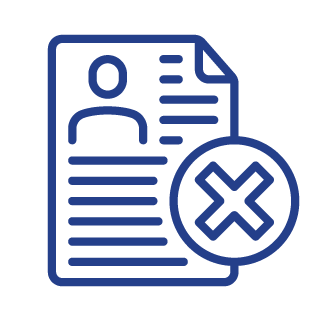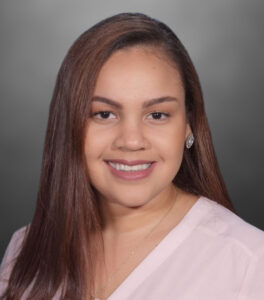Employment Based Visas and Green Cards - H-1B Lawyers
BOOK 30 MINUTE CONSULTATION HERE
($150 Consultation Fee)

U.S. Business Immigration Is Complex
The labor market is tight in many sectors, and American companies are eager to find the right talent to meet their hiring needs. Sometimes the best answer is to supplement the U.S. workforce with highly skilled foreign workers who value freedom and are eager to realize the American dream.
Sponsoring foreign workers through the U.S. business immigration system can appear daunting. U.S. companies wanting to legally sponsor key foreign workers must navigate a complex matrix of U.S. immigration laws and procedures. Given these many challenges, some U.S. employers completely opt out of the process.
Working with an experienced immigration lawyers can help businesses navigate complex immigration matters, ensuring compliance with U.S. law and increasing the likelihood of a successful outcome.
At Siri & Glimstad, a law firm with some of the best lawyers in the field, we work with American businesses to demystify the immigration process so they can maximize the opportunity for success. Our immigration team looks forward to working with you!
To discuss immigration issues you may be facing, schedule an initial consultation with our attorneys today.
BOOK 30 MINUTE CONSULTATION HERE
($150 Consultation Fee)
CONTACT US
What are the Two Types of Employment Based Visas?
There are two types of employment based immigrant visas: temporary visas and permanent visas.
Temporary Visas
Companies sponsor foreign workers for limited periods of time on temporary visas. The best-known and widely used temporary business-based visa is the H-1B visa for professional level workers. H-1B visas are commonly referred to as the primary non immigrant status for specialty occupations in the U.S. The H-1B visa is available for persons in professional level jobs such as engineers, software developers, accountants, marketing specialists, chemists, doctors, professors, financial analysts and so forth. Services as a fashion model of distinguished merit or ability also qualify for H-1B visas.
To be eligible for an H-1B visa, there are specific requirements: the applicant must have at least a bachelor’s degree or higher, such as a master’s degree, in a specific specialty related to the position offered, and the position must qualify as a specialty occupation. The particular position must involve the theoretical and practical application of highly specialized knowledge. Parallel positions in the same industry typically require a bachelor’s degree, supporting the specialty occupation criteria. Specialty occupations are defined by federal regulations as jobs that require highly specialized knowledge and a minimum of a bachelor’s degree or its equivalent in a specific field. The application process for H-1B visas requires a valid job offer from a U.S. employer and documentation of the employer employee relationship.
The H-1B visa can be valid for up to 3 years at a time, and for a grand total of 6 years with all employers combined. H-1B visas are granted for a temporary period, initially up to three years, and can be extended to a maximum of six years, with certain circumstances—such as a pending green card or permanent residence application—allowing employees to receive extensions beyond six years. After six years, most visa holders must leave the U.S. for one year before they can reapply for a new H-1B visa unless they have a pending green card application. There are several components to the H-1B process including a requirement that the U.S. employer pay at or above the prevailing wage for the position offered in the job location. Employment conditions, such as prevailing wage and job stability, are certified through the Labor Condition Application to ensure fair employment practices.
The application process involves submitting all required documentation to U.S. Citizenship and Immigration Services (USCIS), the immigration service responsible for adjudicating H-1B petitions. It is important to file all required documentation, including any additional documentation requested by USCIS, to avoid delays in receiving a final decision. H-1B visa holders can change employers, but a new employer must file a new H-1B petition on their behalf before they start the new job. A new petition must be filed prior to starting a new job or if the employee wishes to change employers, and work authorization is contingent on proper filing and approval.
Family members of H-1B visa holders may be eligible for dependent visas, such as H-4, and in some cases may also obtain work authorization. The annual H-1B cap is determined each fiscal year, with labor statistics and public law (such as Public Law 114-113) influencing visa limits and additional fees for certain employers based on their workforce composition.
Base government filing fees for an H-1B petition can be several thousand dollars, plus a similar amount for legal fees. It is much easier to file a transfer H-1B visa petition for a foreign worker who already has H-1B status rather than to try to obtain an initial H-1B visa through the annual H-1B cap visa lottery. Government processing times can vary from around 2 weeks for cases filed with expedited premium processing (requires an additional filing fee) to several months or more for standard processing cases.
Other commonly used temporary business visas include L-1 visas for intra-company transfers, TN visas for Canadian and Mexican professionals, and O-1 visas for persons of extraordinary ability in business, science or the arts.
Permanent Visas
The process for a U.S. business to sponsor a foreign worker for a permanent visa (also known as a green card) involves several steps. Most foreign workers going through the green card process must first obtain PERM labor certification, which requires the U.S. employer to undertake a labor market recruitment test to see if there are any qualified U.S. workers. For many foreign workers, the ultimate goal of this process is to obtain permanent residency in the United States, which provides lawful status and long-term security.
The second step in the process is to get an approved I-140 petition in the EB-2 or EB-3 category. A smaller percentage of foreign workers will be eligible to bypass the PERM labor certification phase and file an I-140 petition in the EB-1 category as a multinational manager, a person of extraordinary ability, or an outstanding researcher/professor.
All foreign workers seeking to obtain a green card must submit an I-485 application to adjust status to that of a permanent resident as the final step in the process. Approval of the I-485 application results in permanent residency, granting the individual the associated benefits, such as the ability to live and work in the country indefinitely. The overall green card process can take 12-24+ months and cost $10,000-$20,000 for filing fees and legal fees combined. As with temporary visas, government agencies can issue requests for evidence or outright denials on permanent visa applications. It is possible to appeal most denials, but doing so adds considerable time and expense, and a case approval is not certain.
BOOK 30 MINUTE CONSULTATION HERE
($150 Consultation Fee)
CONTACT US
What Government Agencies Should I Communicate with for an Employment Based Visa?
The involvement of numerous U.S. government agencies in various aspects of the immigration process creates confusion for employers. Knowing the primary government agency “players” can eliminate some of the stress in the immigration process.
-
U.S. Citizenship & Immigration Services (CIS) adjudicates most employment-based temporary and permanent visa petitions
-
The Department of Labor (DOL) is involved in the H-1B temporary visa process through certification of the underlying Labor Condition Application (LCA) and in the PERM labor certification process for green card applications
-
The Department of State (DOS) has jurisdiction over U.S. Consulates abroad, which issue visa stamps in the passports for travel
-
U.S. Customs & Border Protection (CBP) admits foreign workers into the country at the port of entry Immigration & Customs Enforcement (ICE) initiates I-9 audits and reviews company records
-
The Department of Justice (DOJ) conducts investigations if a complainant alleges immigration-related or national origin discrimination
BOOK 30 MINUTE CONSULTATION HERE
($150 Consultation Fee)

Head of Immigration
CONTACT US
Know The Obstacles
U.S. companies wanting to legally sponsor key foreign workers must navigate a complex matrix of U.S. immigration laws and procedures.

The options for temporary and permanent visas read like an alphabet soup.

Review by multiple U.S. government agencies creates a complex labyrinth.

Processing times can be frustratingly slow and unpredictable.

Adjudications by government agencies seem to be riddled with inconsistencies resulting in requests for evidence or even denials.
At Siri & Glimstad, we work with American businesses to demystify the immigration process so they can maximize the opportunity for success.
Contact Us
BOOK 30 MINUTE CONSULTATION HERE
($150 Consultation Fee)




